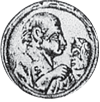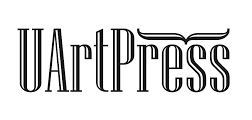Du « theatrum physicum » a l’illusion enchanteresse. Trois exemples de la littérature dramatique hongroise (1817–1841)
Keywords:
Hungarian dramaAbstract
From the “Theatrum Physicum” to the Magic of the Illusion. Three Examples in the Dramatic Hungarian Litterature (1817-1841)
We are analyzing the presence of the theme of fire in three author’s work, from the beginning of the 19th century (Farkas Bolyai, Sándor Kisfaludy, László Teleki). These authors wanted to present the history of the morality in theatrical pictures. The author or the director dares to give an individual response to problems like the relationship between the men in power and their inferiors, the social differences, the diversity of the country’s vision or the variety of the history’s narration. We cannot reduce our interpretation on the facts of the reception, because there are just a few of these from this period, but we can approach these mysterious theatrical works of the Hungarian literature by analyzing the different versions of the fire’s meanings.
References
Anon, [s.a.]. Mage et soldat [Plaque animée]. Reproduit en ligne à Lanterna Magica. [Consulté le 7 novembre 2017]. Disponible sur : http://www.laternamagica.fr/notice.php?id=2402.
BARTHA, Katalin Ágnes, 2010. Shakespeare Erdélyben : XIX. századi magyar nyelvű recepció. 1ère édition, Budapest : Argumentum.
BOLYAI, Farkas, 1998. II. Mohamed vagy A’ ditsöség’ gyözedelme a’ szerelmen. En : Bolyai Farkas Drámák. Texte établi et annoté par Szilárd Borbély. Debrecen : Kossuth Egyetemi Kiadó.
FERENCZY, Endre, MARÓTI, Egon, HAHN, István, 1992. Az ókori Róma története, 1ère édition, Budapest : Tankönyvkiadó.
GÁLOS, Rezső, 1941. Verseghy Ferenc kiadatlan tanítókölteménye, (Második, bef. közl.). Irodalomtörténeti Közlemények, vol. 51, no. 2., p. 76-82. [Consulté le 7 novembre 2012]. Disponible sur : http://epa.oszk.hu/00000/00001/00179/pdf/.
KÁLMÁN, Béla, 1999. Napfogyatkozások. [Consulté le 7 novembre 2017]. Disponible sur : http://fenyi.solarobs.csfk.mta.hu/~kalman/99fogy.html.
KAYAS, George. Phlogistique . Encyclopædia Universalis. [Consulté le 7 novembre 2017]. Disponible sur : http://www.universalis.fr/encyclopedie/phlogistique/.
KISFALUDY, Károly, 1983. Stibor vajda. En : Kisfaludy Károly válogatott művei, . Budapest : Ed. Ferenc Kerényi, Szépirodalmi könyvkiadó.
Stibor, 1823. Stibor. Schauspiel in 4 Aufzügen. Aus dem Ungarischen übersetzt von Grafen Carl Albert Festetics. Pest : Ludwig Landerer Edler von Füskút.
TELEKI, László, 1984. Kegyenc. En : Magyar drámaírók 19. század I. Texte établi et annoté par Péter Nagy. p. 673-775.
UBERSFELD, Anne, 1996. Lire le théâtre I-III. 2nd edition. Paris : Éd Belin.
VERSEGHY, Ferenc, 1816-1817. Analyticae institutionum linguae hungaricae. I-III., 1ère édition. Pest : Typis Regiae Universitatis Hungaricae.
VERSEGHY, Ferenc, [online]. Összes költeménye, [Consulté le 7 novembre 2017]. Disponible sur : http://mek.niif.hu/01100/01119/01119.htm.
Downloads
Published
How to Cite
Issue
Section
License

This work is licensed under a Creative Commons Attribution 4.0 International License.
CC-BY permits any use, reproduction, distribution, self-archiving and citation of the work as long as the authors are credited. The complete bibliographical data of Symbolon Journal must also be indicated, which you can find in the How to cite section on this page. If possible, please also place a link leading to the original publication.
Copyright of the paper belongs to the author(s).




